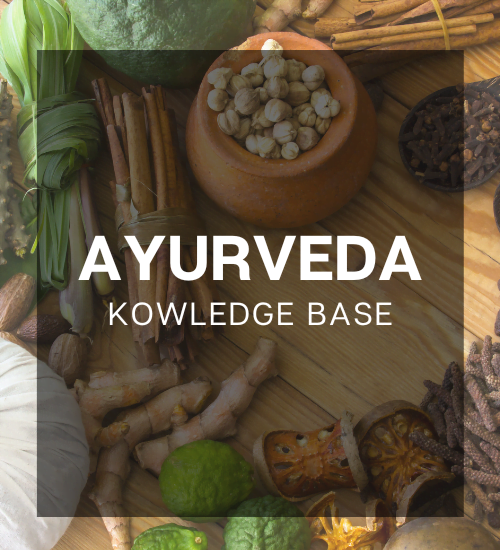No products in the cart.
Amavata (Rheumatism)
Table of Contents

Amavata(Rheumatism)
Ama in combination with vata dosha produces this disease and hence it is called as ama vata.
The disease originates in stomach, manifested in joints and spread to sites of kapha dosha in the body.
In addition follows excessive salivation, increased urine output, loss of sleep, painfull joints with swelling and hot sense to touch, pain in joints similar to scorpion bite, shifting pains in joints present. Affected are big joints such as ankle, knee, hip, sacro-illiac, neck, elbow, shoulder joints.
Symptoms vary according to predominance of dosha. Burning sense of joints in pitta dominance, sense of aching pain in vata, stiffness & heaviness with itching in kapha dominance.
Complications:Thirst, vomiting, giddiness, fainting, discomfort in heart, constipation, heaviness of body & flatulence may associate as complications.
Joint stiffness, posture deformity and heart diseases are severe complications.
Fatal symptoms:Cardiac involvement followed by breathlessness are termed as fatal.
Do’s & don’ts:Regular fasting are advised as it if caused due to indigestion.
Check for regular bowel movements.
Liquid, light, nutritive diet and rest is advised.
Common use of butter milk with minimal salt is advised.
Don’t’s include heavy work.
Avoid curd, jaggery, sugar, milk and bread which are hard to digest.
The connective tissue of endocardium, myocardium, pericardium, synovial membranes and tendons are effected. Symptoms includes – sudden pain, swelling, stiffness of joint or joints, fever, tachycardia, fatigue. the joints involved are knee-ankles-shoulders-wrists. There is migrating poly arthritis. major criteria are- carditis, poly arthritis, erythemia marginatum, rheumatic nodules, chorea. Minor criteria are- fever, arthralgia, raised ESR, prolonged PR interwal in ECG. In some patients both the criteria may present which is complicated.
Ama in combination with vata dosha produces this disease and hence it is called as ama vata.
Nidana #
(Etiology): The causes are reduced digestive power, person who is not doing, regular exercise takes a diet of opposite qualities and does opposite activities, doing an exercise immediately after taking oily food.Samprapthi #
Pathogenesis: Due to above reasons there results in production of undigested product called aama which is discrete, bad smelling viscid sticky substance. Due to action of vata it get circulated from the heart through the vessels to all over the body. It produces obstruction in the various channels or systems in the body that gives raise to symptoms like heaviness in heart and weakness, the entry of aama and vata into various joints causes immobility of organs.The disease originates in stomach, manifested in joints and spread to sites of kapha dosha in the body.
Lakshna #
Symptoms:Body aches, loss of taste, excessive thirst, lazyness, heaviness of body and joints, fever, indigestion are common.In addition follows excessive salivation, increased urine output, loss of sleep, painfull joints with swelling and hot sense to touch, pain in joints similar to scorpion bite, shifting pains in joints present. Affected are big joints such as ankle, knee, hip, sacro-illiac, neck, elbow, shoulder joints.
Symptoms vary according to predominance of dosha. Burning sense of joints in pitta dominance, sense of aching pain in vata, stiffness & heaviness with itching in kapha dominance.
Complications:Thirst, vomiting, giddiness, fainting, discomfort in heart, constipation, heaviness of body & flatulence may associate as complications.
Joint stiffness, posture deformity and heart diseases are severe complications.
Fatal symptoms:Cardiac involvement followed by breathlessness are termed as fatal.
Line of treatment: #
Langhana-pachana-sodhana-samana-swedaDo’s & don’ts:Regular fasting are advised as it if caused due to indigestion.
Check for regular bowel movements.
Liquid, light, nutritive diet and rest is advised.
Common use of butter milk with minimal salt is advised.
Don’t’s include heavy work.
Avoid curd, jaggery, sugar, milk and bread which are hard to digest.
Medication: #
Erandi tailam, narikela tailam, amavatari ras, haritaki churnam, makaradwajam, ras sindhooram.Modern view #
Rheumatic feverRheumatic fever is related with group A beta haemolytic streptococci, probably on the basis of an antigen common to the heart and streptococcus. The disease is often proceded by pharyngitis or tonsillitis 1-3 weeks before.The connective tissue of endocardium, myocardium, pericardium, synovial membranes and tendons are effected. Symptoms includes – sudden pain, swelling, stiffness of joint or joints, fever, tachycardia, fatigue. the joints involved are knee-ankles-shoulders-wrists. There is migrating poly arthritis. major criteria are- carditis, poly arthritis, erythemia marginatum, rheumatic nodules, chorea. Minor criteria are- fever, arthralgia, raised ESR, prolonged PR interwal in ECG. In some patients both the criteria may present which is complicated.
Updated on November 24, 2024
Powered by BetterDocs
 Doctor_Panel
Doctor_Panel






 INR
INR 



































